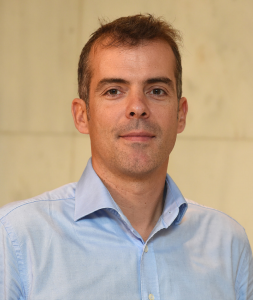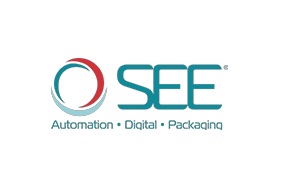From the SEE Impact Report: Q&A With Arnaud Brunet
Published 04-19-24
Submitted by SEE®

Originally published in the SEE Impact Report 2022
Arnaud Brunet serves as Executive Director, Portfolio and Sustainability, for SEE in the Europe, Middle East, and Africa (EMEA) region. With decades of experience in the food and packaging industries, he leads the food portfolio team in developing and commercializing innovative packaging solutions while also coordinating advocacy and sustainability strategies in the region.
What are some of EMEA’s most pressing sustainability packaging challenges, and how is SEE innovating to help solve them?
The European region has been a leader in developing and implementing policies that drive dramatic changes in business and society, with a goal to improve overall sustainability. Beginning with the European Green Deal, approved in 2020, a set of policy initiatives were put in place. More recently, policy changes are being considered as part of the European Union’s Packaging and Packaging Waste Regulation, an initiative to ensure all packaging is reusable or recyclable in an economically feasible way by 2030.
Our industry’s challenge is that we do not yet have harmonization on packaging requirements, especially across countries in Europe and in the U.K. Without a common set of design guidelines, we need to develop packaging materials to comply with different standards while keeping product protection at the forefront of what we do.
SEE is innovating to meet regulatory requirements while also looking to improve our customers’ sustainability. We are guided by three key focus areas:
1. Product protection. Whether protection against damage, or prevention of food waste—our packaging reduces overall carbon footprint impacts.
2. Designing for recycling. By simplifying our packaging designs, we are also making our solutions easier to recycle.
3. Circularity. Working with customers and suppliers, we are driving innovation in recovering and recycling materials, with an emphasis on chemical recycling.
How is SEE meeting the sustainability needs of EMEA customers?
We lead our industry with solutions that provide outstanding product protection, use minimum amounts of packaging, and enable our customers to bring automation and digital innovations into their operations. A good example is our CRYOVAC® brand barrier display overwrap film with post-consumer recycled content. These ultra-thin films are used to overwrap oxygen-sensitive foods like cheese and processed meats. The solution uses the thinnest film on the market (which reduces the overall amount of plastic), offers an optimized oxygen barrier to extend shelf life while meeting recycling requirements, and incorporates 30% recycle content that is compliant for food applications.
We are also innovating our shrink barrier bag offerings. These novel food packaging solutions provide product protection and sustainability and are helping to make the switch from heavy thermoform packs to lightweight shrink vacuum bags.
In addition, we are helping our customers measure and report improvements in their environmental impact through a reduction in greenhouse gas emissions. By being able to quantify benefits of the packaging and the savings from waste reduction, we provide our customers with confidence that their sustainability efforts are making a difference.
How is your team working to address circularity in the region?
Together with a cheese processor, leading retailer, chemical recycler, and polymer manufacturer, in 2020, SEE’s EMEA team led the industry in sustainability by conducting a trial to prove that closed-loop recycling is feasible for complex soft plastic film. Since then, we have expanded efforts and engaged with other customers and partners to scale efforts for collection, recycling, and reuse of materials—with an emphasis on expanding the type of packaging materials that are collected. We have a vision for circularity that combines the material efficiency of flexible packaging with the innovation of chemical recycling to make packaging that can be remade.
How is SEE collaborating in EMEA to help customers achieve the most sustainable impact?
In many ways, carbon footprint and greenhouse gas emissions are the currency of sustainability. We use life-cycle assessments that include both packaging and the packed product and work with our customers to minimize overall impacts. Through product design, we achieve outstanding packaging performance.
But just as we focus on design for performance, we are focusing on design for circularity—by anticipating future regulatory requirements and working to implement design standards to make sustainability easier to understand for customers and consumers.
The key is “design for performance” and “design for circularity” have to be done together. We work with association partners to emphasize how we must simultaneously protect the packaged product while designing our packaging solutions to be collected, sorted, and recycled. Keeping these design elements in balance is critical to prevent food waste while making sure the packaging has a means to be recovered after use.
Read the full SEE Impact Report 2022

SEE®
SEE®
Sealed Air Corporation (NYSE: SEE), is a leading global provider of packaging solutions that integrate sustainable, high-performance materials, automation, equipment and services. SEE designs, manufactures and delivers packaging solutions that preserve food, protect goods and automate packaging processes. We deliver our packaging solutions to an array of end markets including fresh proteins, foods, fluids and liquids, medical and life science, e-commerce retail, logistics and omnichannel fulfillment operations, and industrials. Our globally recognized solution brands include CRYOVAC ® food packaging, LIQUIBOX ® liquids systems, SEALED AIR ® protective packaging, AUTOBAG ® brand automated packaging systems, and BUBBLE WRAP ® brand packaging. In 2023, SEE generated $5.5 billion in sales and has approximately 17,000 employees who serve customers in 115 countries/territories.
More from SEE®

